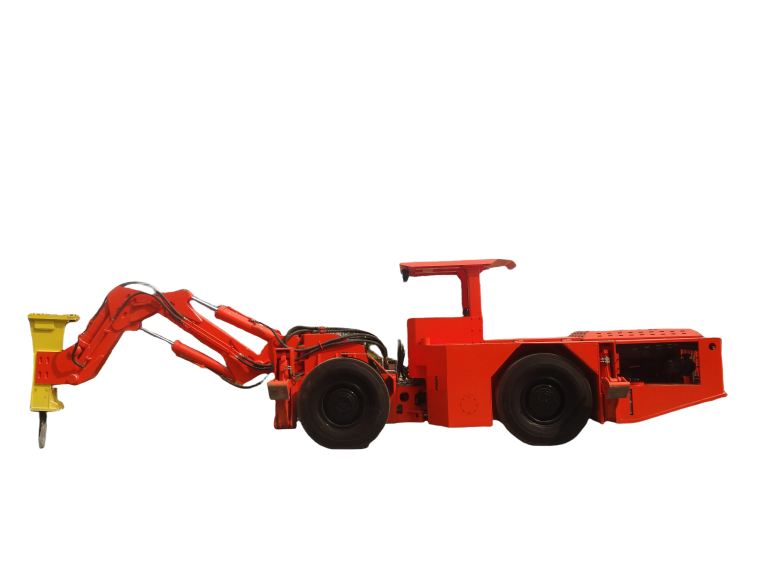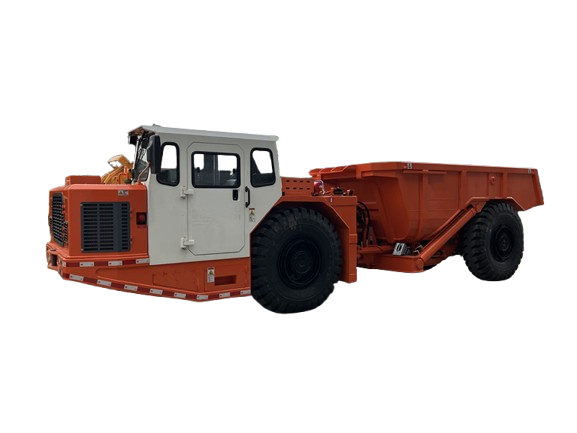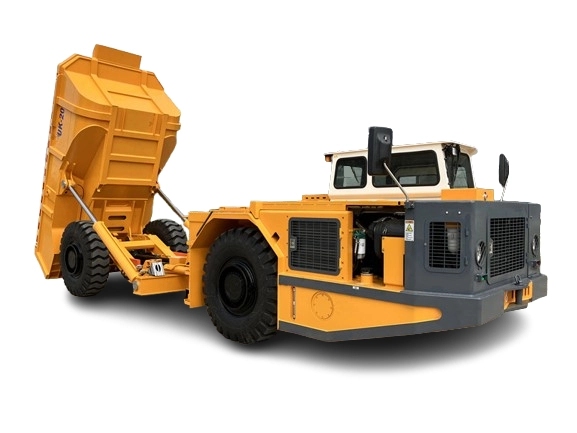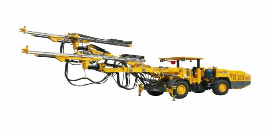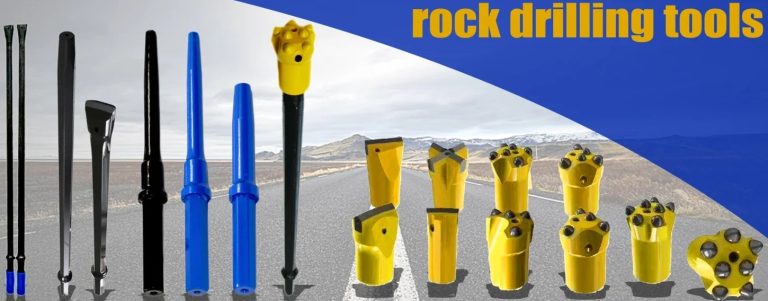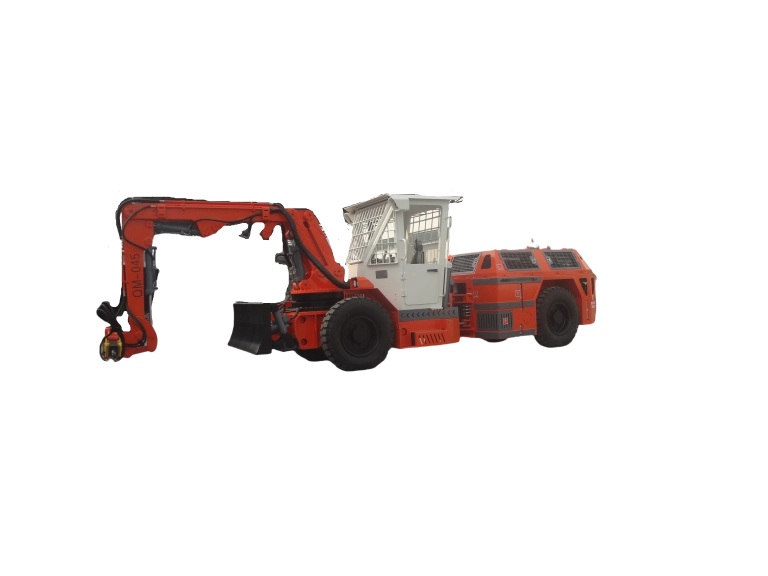
Underground mining throws plenty of challenges at teams every day. Loose rock overhead? That’s a real headache. Enter the underground pick scaler—a trusty tool that knocks down those risks and keeps things moving. If you’re in the thick of tunnel work or ore extraction, this guide breaks it down for you. We’ll cover what it does, why it counts, and how to make the most of it. Stick around, and you’ll see how the right scaler can change your shift from tense to smooth.
What Is an Underground Pick Scaler?
Picture this: you’re deep in a mine, staring up at jagged rock faces that could drop anytime. An underground pick scaler steps in as your go-to machine for clearing that mess. It’s a diesel-powered beast built for scraping and breaking loose material in tunnels and shafts. Think of it as a mechanical arm with a sharp pick, reaching high to loosen debris without you climbing up there.
These machines shine in spots where hand tools just won’t cut it. They handle the grunt work, letting crews focus on the big picture. And in tight spaces? No sweat. Their compact build slips through narrow drifts, making them a staple for any serious operation.
How It Works
At its core, the scaler uses hydraulic power to swing a heavy pick against the rock. The engine hums along, pushing fluid through lines to the boom. That boom extends and angles just right, slamming the pick into weak spots. One hit, then another—loose chunks tumble down. Operators control it all from a cab, joystick in hand, watching the action unfold.
It’s not brute force alone. Sensors and controls fine-tune the swing, so you avoid overkill. In a typical run, it scales a face in minutes, not hours. Short bursts keep the engine cool, and the setup pulls back quick for the next pass. Simple, right? Yet it packs enough punch to handle tough overhangs.
Key Components
Every part plays its role. Start with the diesel engine—liquid-cooled for steady power without overheating. Then the boom: extendable up to nine meters, giving reach without wobbling. The pick itself? Tough steel, replaceable when it wears.
Don’t forget the undercarriage. Wide tracks grip uneven floors, even on slopes. And the cab? Ergonomic, with clear views and easy controls. These bits add up to a machine that runs day in, day out.
Why Scaling Matters in Underground Mining
Scaling isn’t glamorous, but skip it, and you’re asking for trouble. It strips away loose rock after blasting, prepping safe ground for the next crew. In underground work, where space is tight and air’s precious, good scaling saves lives and time.
Teams that scale right see fewer delays. Rock falls? Rare. Downtime from injuries? Even rarer. Plus, clean faces mean better drilling and loading later. It’s the quiet hero that ties the whole cycle together.
Safety Benefits
Safety tops the list. Manual scaling means ladders and hammers—risky business. A scaler keeps feet on the ground. The boom does the reaching, spotting hazards from afar. And with ground-level access for checks, no one’s dangling from ropes.
Data backs it up. Sites using scalers report fewer incidents, thanks to that extra buffer. Operators stay comfy in cabs, away from dust and falls. It’s peace of mind, plain and simple.
Efficiency Gains
Now, flip to the numbers. A solid scaler hauls more per shift. High traction pulls it through inclines, and quick speeds—up to 23 kilometers per hour flat—get it repositioned fast. That means more faces cleared, less idle time.
Payload counts too. These machines carry their weight in tools and fuel, cutting trips back to base. Over a month? That’s hours saved, costs down. Teams hit targets easier, and bosses notice.
Choosing the Right Underground Pick Scaler
Picking a scaler feels like shopping for a truck—you want power without the bulk. Look for one that fits your drifts: narrow turning radius for twists, reach for high ceilings. Diesel drive? Great for torque in rough spots. But match it to your load—too small, and you’re swapping picks often; too big, and it won’t turn.
Test it in real conditions if you can. Does it climb your slopes? Handle your rock types? Budget for the long haul: low upkeep means fewer headaches down the line.
Factors to Consider
Narrow it down with these points. Here’s a quick table to weigh options:
| Factor | What to Check For | Why It Matters |
|---|---|---|
| Reach Height | At least 7-9 meters | Covers tall faces without ladders |
| Engine Power | 80+ kW, turbocharged | Steady pull in dusty, hot tunnels |
| Turning Radius | Inner under 4 meters | Squeezes through tight corners |
| Operating Weight | Around 13 tons | Balances stability and mobility |
| Speed Capability | 20+ km/h horizontal | Quick moves between work zones |
Bullets for the rest:
- Traction Force: Over 200 kN keeps it planted on grades.
- Maintenance Access: Ground-level panels cut service time.
- Fuel Efficiency: Liquid cooling stretches every tank.
Match these to your site, and you’ll land a winner.
Best Practices for Operating a Pick Scaler
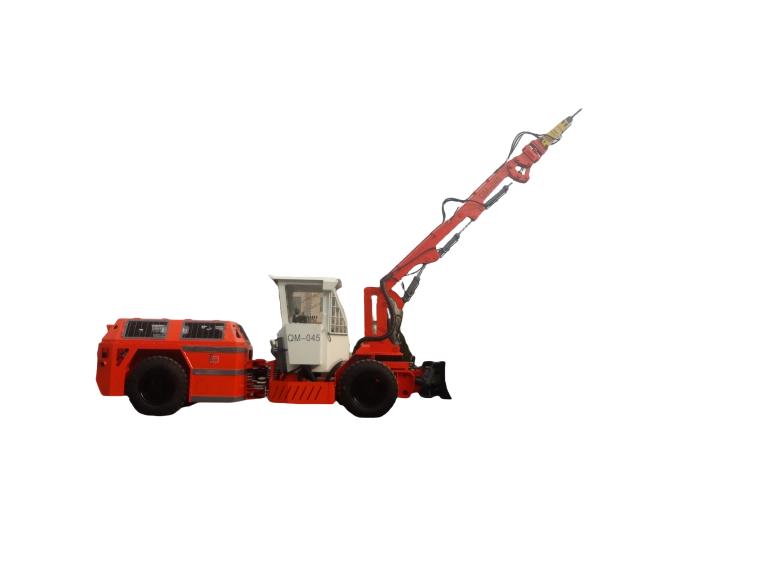
Running a scaler right turns good gear into great results. Start slow: inspect before startup. Check booms for cracks, fluid levels, tracks for wear. A five-minute walk-around spots issues early.
In the cab, ease into it. Swing gentle at first, build speed as you read the rock. Angle the pick to shear, not smash—saves energy and tips. And watch the load: clear debris as it falls to avoid piles blocking your path.
Daily Maintenance Tips
Keep it simple daily. Wipe down the cab, grease fittings. Drain water from air lines to fend off rust. Track tension? Adjust weekly, or you’ll spin out.
For deeper work, swap filters monthly. Engine oil? Change per hours logged. These habits stretch life, dodge breakdowns. Teams that do swear by it—fewer calls to the shop.
Safety Protocols
Rules aren’t optional. Gear up: helmet, vest, glasses. Clear the zone before swinging—no one under the boom. Sound horns on moves, light up blind spots.
Train fresh hands thorough. Simulators help, but real-seat time seals it. And log every shift: what worked, what didn’t. Builds a safer crew, step by step.
Real-World Applications
Scalers prove their worth worldwide. In steep gold mines, they tame blasted ceilings, letting loaders roll in safe. Tunnels for subways? They clear after shots, speeding rail progress.
Take a copper site in the Andes. Rough grades, high dust— the scaler climbed 1:7 inclines, scaling faces in half the time. Crews hit quotas, with zero falls that season. Or iron ore drifts in Australia: tight turns, wet floors. Its grip and reach kept work flowing, cutting cleanup by days.
These stories show it: scalers adapt, boost output. Your setup could see the same.
Introducing Yantai Chi Hong Machinery Co., Ltd.
Yantai Chi Hong Machinery Co., Ltd. stands out as a reliable supplier of underground pick scalers. With over 12 years in the game, they’ve built a solid rep for gear that handles the underground grind. Their setup spans a huge production base, packed with skilled folks who craft loaders, trucks, and scalers to fit real needs. Certifications like CE and ISO keep quality tight, and their after-sales crew jumps in for installs, tweaks, and fixes—making sure your machine runs smooth from day one.
Conclusion
Wrapping this up, an underground pick scaler isn’t just gear—it’s a game-changer for safer, faster mining. From picking the fit to running it right, every choice counts. Dive in, apply these tips, and watch your operation hum. You’ve got the tools now; time to scale up.
Frequently Asked Questions
What makes an underground pick scaler a must-have for tunnel work?
An underground pick scaler clears loose rock quick and safe, cutting risks in tight spaces. It reaches high without ladders, so crews stay grounded and productive.
How do I know if my site needs an underground pick scaler?
If you’re dealing with overhead debris after blasts or in drifts over seven meters tall, yes. It speeds scaling, trims costs, and boosts safety over hand methods.
Can an underground pick scaler handle steep inclines?
Sure can. With strong traction and steady power, it climbs 1:7 grades at good speeds, keeping your scaling on track even uphill.
What’s the best way to maintain an underground pick scaler daily?
Quick checks work wonders: inspect booms, top off fluids, grease up. Ground-level access makes it easy, so downtime stays low.
How does an underground pick scaler improve overall mine efficiency?
By knocking out scaling fast, it frees teams for loading and hauling. Less mess means smoother flows, hitting targets with fewer hitches.





